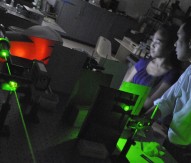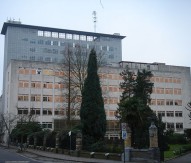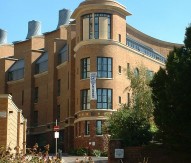
ERC project helps discover new electron traits
Physicists at the Massachusetts Institute of Technology and the University of Manchester have discovered unexpected behaviour of electrons under very specialised conditions which could lead to new types of transistors and electronic circuits that could prove highly energy efficient.
Scientists part-funded by the European Research Council have found that when a sheet of graphene is placed atop another two-dimensional material, electrons instead move sideways, perpendicular to the electric field. This happens even without the influence of a magnetic field — the only other known way of inducing such a sideways flow. Furthermore, two separate streams of electrons would flow in opposite directions, both crosswise to the field, cancelling out each other’s electrical charge to produce a “neutral, chargeless current”; the exact angle of this current relative to the electric field can be precisely controlled. Normally, electrons move through a conductive material in an electric field and tend to follow the path of least resistance, which runs in the direction of that field.
Leonid Levitov, an MIT professor of physics and a senior author of a paper describing these findings, and co-author Andre Geim at Manchester say this flow could be altered by applying a minute voltage on the gate, allowing the material to function as a transistor. Currents in these materials, being neutral, might not waste much of their energy as heat, as occurs in conventional semiconductors — potentially making the new materials a more efficient basis for computer chips.
Levitov said: “It is widely believed that new, unconventional approaches to information processing are key for the future of hardware. This belief has been the driving force behind a number of important recent developments, in particular spintronics” — in which the spin of electrons, not their electric charge, carries information.
The research is published in the journal Science.






